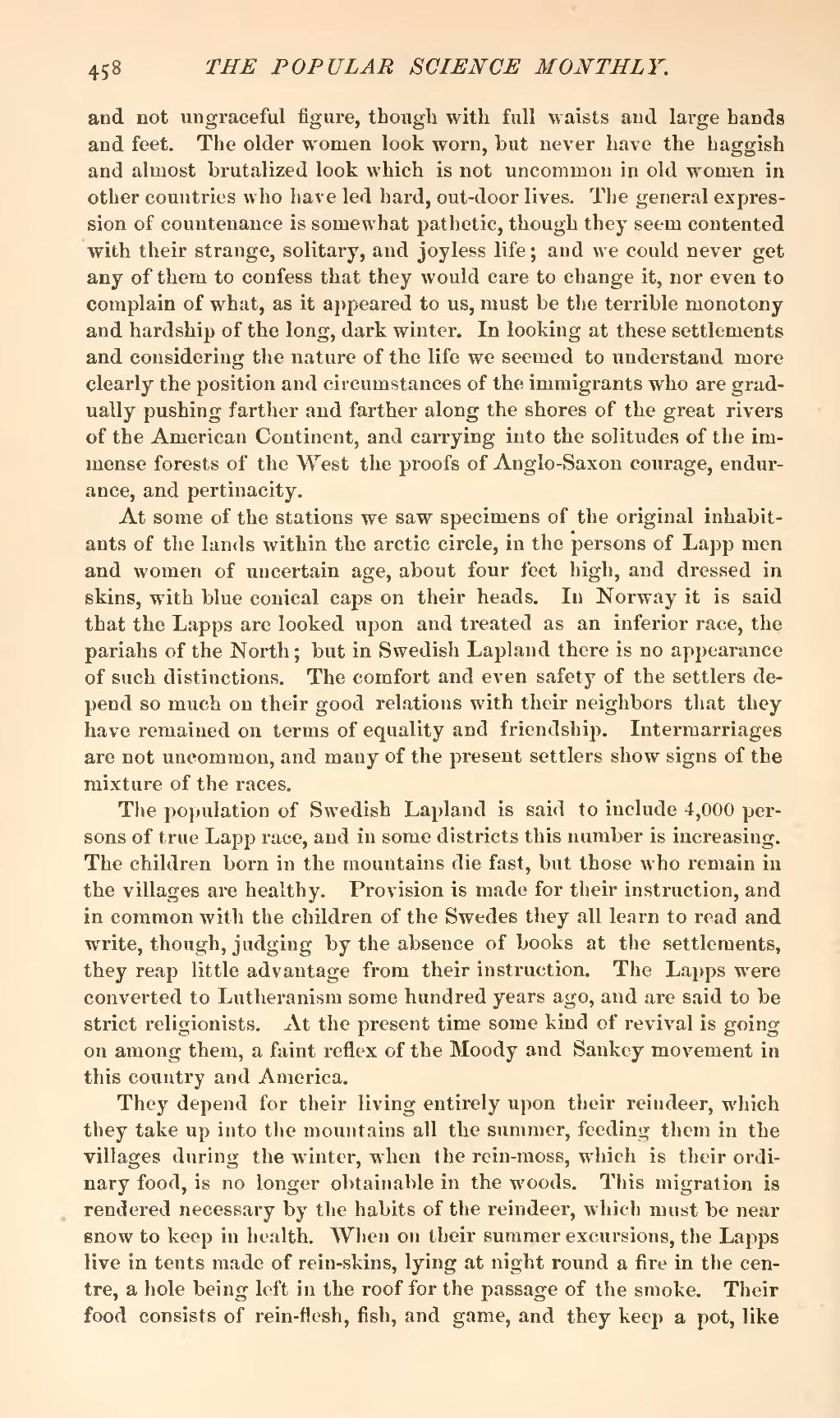and not ungraceful figure, though with full waists and large hands and feet. The older women look worn, but never have the haggish and almost brutalized look which is not uncommon in old women in other countries who have led hard, out-door lives. The general expression of countenance is somewhat pathetic, though they seem contented with their strange, solitary, and joyless life; and we could never get any of them to confess that they would care to change it, nor even to complain of what, as it appeared to us, must be the terrible monotony and hardship of the long, dark winter. In looking at these settlements and considering the nature of the life we seemed to understand more clearly the position and circumstances of the immigrants who are gradually pushing farther and farther along the shores of the great rivers of the American Continent, and carrying into the solitudes of the immense forests of the West the proofs of Anglo-Saxon courage, endurance, and pertinacity.
At some of the stations we saw specimens of the original inhabitants of the lands within the arctic circle, in the persons of Lapp men and women of uncertain age, about four feet high, and dressed in skins, with blue conical caps on their heads. In Norway it is said that the Lapps are looked upon and treated as an inferior race, the pariahs of the North; but in Swedish Lapland there is no appearance of such distinctions. The comfort and even safety of the settlers depend so much on their good relations with their neighbors that they have remained on terms of equality and friendship. Intermarriages are not uncommon, and many of the present settlers show signs of the mixture of the races.
The population of Swedish Lapland is said to include 4,000 persons of true Lapp race, and in some districts this number is increasing. The children born in the mountains die fast, but those who remain in the villages are healthy. Provision is made for their instruction, and in common with the children of the Swedes they all learn to read and write, though, judging by the absence of books at the settlements, they reap little advantage from their instruction. The Lapps were converted to Lutheranism some hundred years ago, and are said to be strict religionists. At the present time some kind of revival is going on among them, a faint reflex of the Moody and Sankey movement in this country and America.
They depend for their living entirely upon their reindeer, which they take up into the mountains all the summer, feeding them in the villages during the winter, when the rein-moss, which is their ordinary food, is no longer obtainable in the woods. This migration is rendered necessary by the habits of the reindeer, which must be near snow to keep in health. When on their summer excursions, the Lapps live in tents made of rein-skins, lying at night round a fire in the centre, a hole being left in the roof for the passage of the smoke. Their food consists of rein-flesh, fish, and game, and they keep a pot, like
